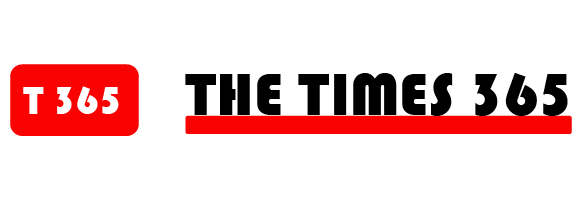“The 360” shows you diverse perspectives on the day’s top stories and debates.
What’s happening
At the stroke of midnight on Thursday morning, a bedrock principle that has defined college sports for generations suddenly changed. That’s when a new NCAA policy allowing athletes for the first time to profit from their name, image and likeness (NIL) went into effect.
Under the new policy, hundreds of thousands of college athletes in the United States are now eligible to make money from things like endorsements, personal appearances and social media shout-outs. Rules barring schools from paying athletes directly are still in place. The change came abruptly — the NCAA announced its new policy less than eight hours before it became active — but it also marks a major step in a fight over amateur sports that has gone on for decades.
The NCAA had long resisted allowing athletes to leverage their fame for profit, arguing that the payments would undermine the purity of the amateur sports model. Support for that system has gradually dwindled over the years, as college sports grew into a multibillion dollar industry characterized by massive TV deals, lucrative sponsorship deals and huge coaching salaries, while players received none of the revenue they helped generate. A handful of recent court cases, including one just last week, had chipped away at the legal ground that had allowed for the student-athlete model to persist for so long.
The final push that forced the NCAA to change its NIL policy came from the states. More than a dozen state legislatures, starting with California in 2019, passed laws barring schools from punishing athletes who accept endorsement money. Many of those laws went into effect on Thursday, which compelled the NCAA to revise its rules so that athletes across the country would have similar rights.
Why there’s debate
The new rules were celebrated by current and former college players, as well as commentators who have accused the NCAA of exploiting athletes by denying them the right to make money off of their talents. The new rules, they argue, will finally allow stars in sports like football and basketball to take in a share of the millions of dollars that they generate for their schools. Others say one of the biggest benefits of the new policy is that it will allow athletes who don’t have the opportunity to make massive salaries at the pro level, like gymnasts and women’s sports stars, to cash in when they’re at their most marketable.
Some critics of the decision have echoed the NCAA’s argument that allowing players to sign sponsorship deals poses a threat to the foundations of what makes college sports special. There are also fears that the abruptness of the rule change and the patchwork of laws from state to state will lead to chaos, as athletes, schools and businesses scramble to navigate the new landscape. Many of the NCAA’s harshest critics, although they support the new rules, say the change is at best a half-measure toward what should be the ultimate goal: ending the amateur sports model entirely.
What’s next
The NCAA has said it’s hoping for Congress to establish federal NIL standards to “provide clarity at a national level.” A number of bills to address the issue have been proposed, but have stalled over partisan disagreement over the scope of the rights that should be granted to athletes.
Perspectives
The new rules make an unfair system more equitable
“The world of college sports will never be the same. And it’ll be a brave new world, full of opportunity and promise for the athletes who for generations have supplied the product with none of the profit.” — Paul Myerberg, USA Today
Poorly defined, piecemeal rules will create chaos
“While athletes cash in on long-awaited dough, chaos consumes this new space. … Schools are scrambling to craft policies. Compliance staffs are bracing to be overwhelmed. And agents are offering six-figure advances to some NFL prospects, even if the legality of that is in question. Most troubling of all, no one exactly knows who is supposed to enforce any of it — and how.” — Ross Dellenger, Sports Illustrated
Anything short of an end to the amateur sports model is insufficient
“NIL doesn’t come close to approaching a fair market value for major college football and men’s basketball players. And it doesn’t address workers’ comp and long-term health care, both of which remain out of consideration. … Unless and until those athletes are treated like the workers they are, I am hard-pressed to celebrate what happened [in] the past few days as some sort of watershed moment for college sports.” — Kevin Blackistone, Washington Post
College athletes shouldn’t be paid
“Regular students go to college and study and work hard to maintain their grades in order to keep scholarships if they have them. They don’t go around whining and complaining about how they should be getting a kickback for that promotional picture the school used of them studying at the library, or the photo that happens to grace the cover of the orientation-day brochure, pictures that might show random students walking on campus. Those regular students don’t threaten lawsuits for the school profiting from using their image or their name — or God forbid — their likeness, whatever that is.” — Chris Hays, Orlando Sentinel
Athletes have deserved a cut of the money they generate for a long time
“Think of it this way: There’s been drastic change since 1984 in revenue generation, in coaches’ salaries, in media rights deals, in apparel deals. But all that money flowed to the NCAA and its member schools. Now that NIL is open, it may seem like drastic change, but it’s not. It’s the same change that the schools asked for, and now athletes can benefit.” — ESPN college basketball analyst Jay Bilas
The rules create new ways for college athletes to be exploited
“NIL provisions outsource compensation to third parties and put the onus of earning anything on the athletes themselves. This not only keeps benefits unregulated and uneven, putting the athlete at risk for further exploitation, but also plain old makes them do more work. … Athletes should not have to do anything more to be paid for the work they do or recognized as full employees.” — Ben Natan, SB Nation
The new rules could make competitive imbalance even worse
“NIL rights will require athletes to spend hours marketing themselves, sifting through competing offers and opportunities. It could lead to an arms race among schools offering NIL counseling and networking, further distancing rich athletic departments from those less rich.” — Editorial, Kansas City Star
Women and athletes in lower-profile sports stand to benefit the most
“Much of the conversation around NIL has revolved around football and men’s basketball players, but women and players from ‘non-revenue’ sports arguably stand to benefit the most.” — Cassandra Negley, Yahoo Sports
Is there a topic you’d like to see covered in “The 360”? Send your suggestions to the360@yahoonews.com.





